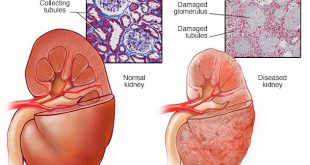As a CKD patient, what can I do to prevent or manage CVD?
You should focus on three key areas of action:
- Aggressively manage risk factors to prevent or retard worsening of CVD
- Watch for classic symptoms
- Get proper tests and screenings
How can I reduce my risk of CVD?
You can make lifestyle changes that will affect your modifiable risk including:
- Cessation of smoking – if you stop smoking, the risk of heart attack and death is reduced by about 50 percent after one year, even if you previously smoked for several years. If you stop smoking for good, risk levels will continue to decrease over time
- Control of diabetes – the target HbA1C for patients with CKD is equal or less than 7.0% 1
- Control of high blood pressure – target blood pressure (BP) should be between 120-139 for the upper reading (“systolic BP”) and less than 90 for the lower reading (“diastolic” BP) in CKD patients.
- However If you have diabetes or heavy loss of protein in the urine more than 1 g/day, the target BP should be lower, i.e. 120-129/<801
- Control of elevated cholesterol and fats in your blood by proper diet and exercise, and medications if necessary
- Control of fluids (limit fluid intake, cut back on salt and for those on dialysis, do not skip dialysis sessions or reduce time on dialysis treatment)
- Exercise – if you have not done any regular exercise and are planning to start, please consult your doctor first for advice. As a rule of thumb, you could start by walking at a comfortable pace such that you are still able to talk as you exercise, and start with short sessions e.g. 5-10 minutes. You can then gradually increase the intensity and duration of your exercise activities.
- Control of serum calcium and phosphorus levels- take phosphate binders, adhere to a reduced phosphate diet (see Renal Diet section), and ensure you do not miss or cut short your dialysis sessions.
Your doctor can also help you to reduce your CVD risks by prescribing medication to lower your blood cholesterol levels if necessary, prescribing aspirin to help thin blood if you have had a previous heart attack or if you are considered at high risk for CVD, and ensuring you have an optimal haemoglobin level (see section on Anaemia and CKD ) .
What are the classic symptoms of CVD?
You should keep an eye out for symptoms that serve as early warning signs of cardiovascular disease, including shortness of breath, easy fatigue and declining functional capacity. Another common symptom is chest discomfort, such as heaviness or burning, induced by exercise. However, some patients with long-standing diabetes may develop CVD without experiencing any chest pain because of diabetic damage to the nerves supplying sensation to the heart muscle.
Not all symptoms are easy to spot, and some heart conditions can develop with no early detection.
Signs of CVD may include frequent drops in your blood pressure during dialysis, new or worsening fluid overload in the form of ankle swelling, distension or fullness of neck veins and abnormal sounds in your lungs on examination with a stethoscope.
What sorts of tests and screenings should I be getting?
Regardless of symptoms, you should see your doctor regularly, and have periodic checks on blood pressure, cholesterol levels and other risk factors. If you develop any symptoms or signs of CVD, your doctor will arrange for further investigations to evaluate the condition of your heart. These may include tests such as an echocardiogram, stress tests such as exercising on a treadmill, or additional methods of testing that involve injections of radioactive agents tracked by cameras or a coronary angiogram.
Remember: by following these three simple key areas of action, you can make a big difference to staying ‘heart healthy’.
Useful websites for more information:
- www. nkf.org.my
- High Blood Pressure and Your Kidneys; High Blood Pressure: A Look at the Causes; High Blood Pressure: How is It Treated?; High Blood Pressure: The Role of the Family; and Living with High Blood Pressure: An Introduction, available from the National Kidney Foundation website at www.kidney.org/general/atoz/.
- High Blood Pressure and Kidney Disease (fact sheet), available from the National Kidney and Urologic Diseases Information Clearinghouse website at www.niddk.nih.gov.
References:
- Ministry of Health Malaysia (2011). Malaysian Clinical Practice Guidelines on Management of Chronic Kidney Disease in Adults
| Last Reviewed | : | 12 May 2016 |
| Writer | : | Dr. Sunita Bavanandan |
| Accreditor | : | Dr. Hooi Lai Seong |
 PENDIDIKAN PESAKIT Kementerian Kesihatan Malaysia
PENDIDIKAN PESAKIT Kementerian Kesihatan Malaysia
